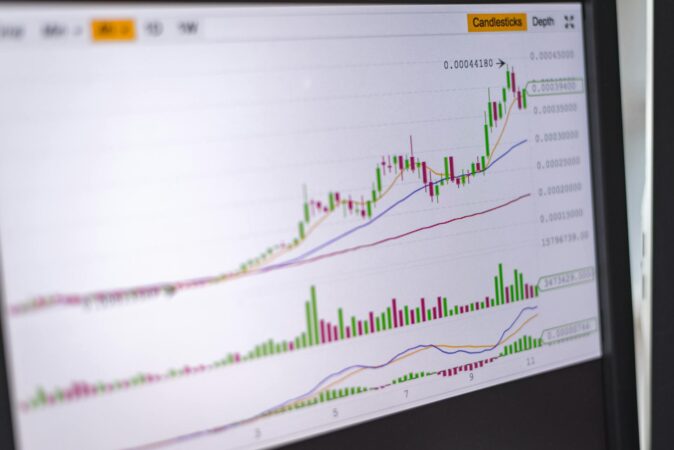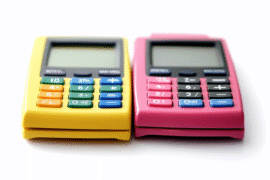This article may contain references to products or services from one or more of our advertisers or partners. We may receive compensation when you click on links to those products or services. Nonetheless, our opinions are our own.
- Mastering Technical Indicators for Day Trading Precision
- Moving Averages: Tracking Market Slope and Momentum
- Relative Strength Index (RSI): Measuring Price Exhaustion
- Bollinger Bands: Visualizing Volatility and Compression
- Volume Indicators: Reading the Market’s Conviction
- MACD: Revealing Trend Shifts and Momentum Convergence
- Stochastic Oscillator: Timing Reversals Within a Range
- Fibonacci Retracement: Identifying Reaction Zones
- Average True Range (ATR): Gauging Volatility, Not Direction
- Parabolic SAR: Trailing Price with Momentum Awareness
- Ichimoku Cloud: Synthesizing Trend, Support, and Future Zones
- Refined Decisions Through Indicator Confluence
- Recommended Reads
Mastering Technical Indicators for Day Trading Precision
Day trading demands accuracy, rapid analysis, and a clear interpretation of price action. Traders often rely on technical indicators to uncover opportunities and confirm patterns in the volatile rhythm of the markets. Below is a refined collection of widely respected indicators, each offering distinct perspectives on momentum, volatility, and trend behavior.
Moving Averages: Tracking Market Slope and Momentum

Moving averages are foundational tools in technical analysis, offering a smoothed view of price movement over time. They help filter noise and expose the underlying direction of a market.
Types of moving averages include:
- Simple Moving Average (SMA): Averages price over a defined period, giving equal weight to all values. While useful for trend confirmation, it can respond slowly to abrupt price shifts.
- Exponential Moving Average (EMA): Applies greater emphasis on recent data, making it quicker to react to short-term movements, a desirable trait for time-sensitive trades.
Crossovers between short- and long-term moving averages can often act as signals for potential entry or exit. For example, when a short-term EMA rises above a long-term SMA, momentum may be shifting upward.
Relative Strength Index (RSI): Measuring Price Exhaustion
The RSI offers insight into momentum by evaluating recent gains and losses. Plotted on a scale from 0 to 100, it reveals whether an asset may be stretched in either direction.
- Readings above 70 often suggest overbought conditions, while those below 30 indicate the potential for a rebound.
- Divergences between price action and the RSI may suggest a fading trend or pending reversal.
- RSI can also validate trend strength when used in combination with other indicators.
Its simplicity and adaptability make it a valuable companion for timing trades with added confidence.
Bollinger Bands: Visualizing Volatility and Compression
Bollinger Bands combine a simple moving average with a set of upper and lower bands based on standard deviation. These dynamic boundaries expand and contract in response to market volatility.
- When the bands contract, the market may be entering a consolidation phase, often preceding a breakout.
- Prices that touch or exceed the bands may indicate overstretched momentum or reversal potential.
The spacing of the bands offers traders a visual sense of market pressure, whether building or releasing, and pairs well with volume analysis or oscillators.
Volume Indicators: Reading the Market’s Conviction
Volume serves as a silent verifier of price action. When prices shift alongside a surge in volume, the move carries greater weight.
Useful tools include:
- On-Balance Volume (OBV): Cumulative measure reflecting whether volume is flowing into or out of a security.
- Volume Moving Averages: Highlight when current trading activity significantly deviates from norms.
- Accumulation/Distribution Line: Balances price and volume to signal whether a trend is supported by underlying buying or selling interest.
Volume can confirm the strength behind breakouts or signal the likelihood of a false move.
MACD: Revealing Trend Shifts and Momentum Convergence
The Moving Average Convergence Divergence (MACD) monitors changes in momentum by comparing two EMAs, commonly the 12th and 26th day periods.
Features include:
- Signal Line Crossovers: The MACD crossing above its signal line may suggest a bullish move; a downward cross may imply weakening momentum.
- Histogram Interpretation: The distance between MACD and the signal line is visualized to indicate momentum strength.
- Divergence Detection: If the price makes new highs while the MACD does not, it may hint at an impending trend reversal.
MACD delivers a blend of trend and momentum insight in a single pane, offering versatility to both short-term and swing traders.
Stochastic Oscillator: Timing Reversals Within a Range
This oscillator compares a closing price to a recent high-low range, outputting values between 0 and 100. Readings above 80 often reflect overbought territory, while those under 20 suggest oversold conditions.
Components:
- %K Line: The raw stochastic value based on the current close and recent range.
- %D Line: A moving average of %K used as a trigger for trade signals.
Crossovers between these lines can suggest entry points, particularly when aligned with broader market structure or trend direction.
Fibonacci Retracement: Identifying Reaction Zones
Fibonacci retracement levels are derived from a numerical sequence and frequently used to anticipate support or resistance during price pullbacks.
Common levels include 23.6%, 38.2%, 50%, and 61.8%.
- These levels often attract price interaction, as traders view them as psychologically meaningful or mathematically justified.
- In a declining market, price may stall or bounce at a Fibonacci level before continuing downward or reversing direction.
This tool works well when layered with trendlines or moving averages for enhanced trade planning.
Average True Range (ATR): Gauging Volatility, Not Direction
The ATR quantifies the average movement range of an asset over a defined period, providing a measure of volatility rather than a trend.
Uses include:
- Position Sizing: Adjust trade size based on expected price fluctuations.
- Stop-Loss Placement: Use the average range to avoid setting stops too close to natural market noise.
- Market Context: High ATR values reflect elevated uncertainty; low values often indicate consolidation or indecision.
ATR is especially useful for traders aiming to adapt dynamically to changing market rhythms.
Parabolic SAR: Trailing Price with Momentum Awareness
The Parabolic Stop and Reverse (SAR) prints dots above or below price candles, signaling potential turning points and guiding exits.
- Dots beneath the price suggest an upward trend, while those above hint at a potential downturn.
- A change in dot position often coincides with a shift in momentum, serving as a prompt to reassess trade direction.
Its clarity and visual simplicity offer swift feedback during fast-paced trading environments.
Ichimoku Cloud: Synthesizing Trend, Support, and Future Zones
The Ichimoku Cloud delivers a broad market perspective through layered calculations that define support/resistance, momentum, and future projections.
Its components:
- Tenkan-sen and Kijun-sen: Reflect short- and mid-term trends.
- Senkou Span A and B: Together they form the shaded “cloud,” projecting future price zones.
- Chikou Span: A lagging line used to verify trend alignment.
The interaction between price and cloud zones can signal breakout strength, trend continuation, or market equilibrium.
Refined Decisions Through Indicator Confluence
While each indicator offers unique insights, traders often combine them to strengthen conviction and manage risk more precisely. For instance:
- Pairing MACD with RSI can highlight momentum shifts backed by confirmed trend reversals.
- Using ATR alongside Bollinger Bands allows for volatility-aware setups.
- Incorporating Volume indicators with Fibonacci levels can validate market sentiment at potential reaction points.
A disciplined approach to interpreting indicators, rather than relying on them in isolation, enhances the consistency and clarity of trade decisions.

Reviewed and edited by Albert Fang.
See a typo or want to suggest an edit/revision to the content? Use the comment form below for feedback.
At FangWallet, we value editorial integrity and open collaboration in curating quality content for readers to enjoy. Much appreciated for the assist.
Did you like our article and find it insightful? We encourage sharing the article link with family and friends to benefit as well - better yet, sharing on social media. Thank you for the support! 🍉
Article Title: Best Indicators for Day Trading
https://fangwallet.com/2025/05/23/day-trading-indicators/The FangWallet Promise
FangWallet is an editorially independent resource - founded on breaking down challenging financial concepts for anyone to understand since 2014. While we adhere to editorial integrity, note that this post may contain references to products from our partners.
The FangWallet promise is always to have your best interest in mind and be transparent and honest about the financial picture.
Become an Insider

Subscribe to get a free daily budget planner printable to help get your money on track!
Make passive money the right way. No spam.
Editorial Disclaimer: The editorial content on this page is not provided by any of the companies mentioned. The opinions expressed here are the author's alone.
The content of this website is for informational purposes only and does not represent investment advice, or an offer or solicitation to buy or sell any security, investment, or product. Investors are encouraged to do their own due diligence, and, if necessary, consult professional advising before making any investment decisions. Investing involves a high degree of risk, and financial losses may occur including the potential loss of principal.
Source Citation References:
+ Inspo
There are no additional citations or references to note for this article at this time.












































